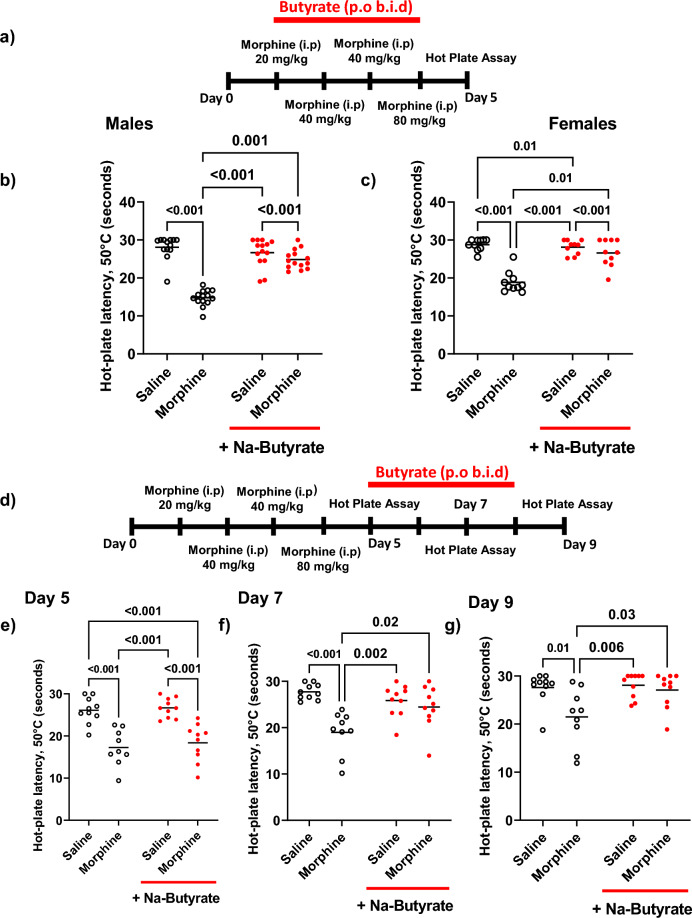Figure 1.
Repeated administration of morphine induces thermal hyperalgesia and is alleviated by NaBut. (a) Experimental timeline for development of opioid-induced hypersensitivity, (b, c). Mice were treated with a ramping dose of repeated administration of morphine across four days, Animals in the NaBut treatment group received 250 mM NaBut b.i.d concurrently with the ramping dose of morphine b.i.d. Animals were assayed for thermal hyperalgesia by hot plate on day 5. Panel (b, c) male and female data from the thermal hyperalgesia hot plate assay comparing the effects of repeated administration of morphine vs repeated administration of morphine + 250 mM NaBut, and relevant controls (N = 14 per group Males and N = 5 Per Group Females). Animals treated with repeated administration of morphine showed a significant decrease in hot plate latency relative to the saline group (Males: morphine 14.8 s ± 0.6 vs saline 28.1 s ± 0.9, p < 0.001). (Females: morphine 18.9 s ± 2.8 vs saline 28.75 s ± 1.5 s, p < 0.001), indicating an increase in thermal hyperalgesia induced by repeated administration of morphine which was attenuated in the morphine + NaBut group. Panel (d) experimental timeline for reversal of hypersensitivity by NaBut. Animals received a ramping dose of morphine (i.p) as in panel (a), but only received NaBut treatment (p.o b.i.d) from day 5 onward. Panel (e, f) thermal hyperalgesia data from the three test days (Day 5, 7, 9) respectively. Animals receiving ramping dose morphine showed significant thermal hyperalgesia which was present on all three testing days, however animals which received ramping dose morphine + NaBut showed a significant decrease in their hyperalgesia by day 7, and was largely absent by day 9 (N = 9–10 per treatment group). Data were analyzed by two-way ANOVA with Bonferroni’s post-test (panel b) (F (1, 51) = 54.25 P < 0.001), panel (c) (F (1, 36) = 27.2 P < 0.001), panel (e) (F (1, 35) = 0.0540 P = 0.82, panel (f) (F (1, 35) = 9.32 P = 0.004), panel (g) (F (1, 35) = 4.02 P = 0.05)).

